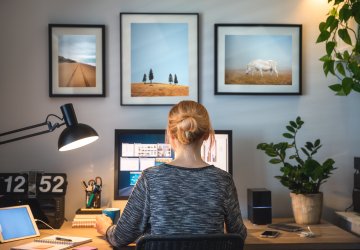
The fundamental transformation of the world over the past two years has changed life as we know it. Our jobs may be the same, yet everything else has changed. The latest developments in hybrid working are significant. Not only for their impact on employees, but also in how they affect the places we work, the processes we use to get things done and the tools we apply. In two blog posts, I would like to discuss the global state of work with regards to people, places, processes and tools.
People: Empowered employees
With the majority of job postings now advertising remote or flexible working, we can safely state that this is becoming the new standard. Policies are changing, and many people are getting used to this new way of working. At the same time, we are in the middle of the great resignation. With an all-time low in unemployment figures, people are more inclined to change jobs if they are not happy.
There are many positive effects of remote/hybrid working, like an improved work-life balance (or rather life balance), more autonomy and higher productivity. However, remote working has taken its toll, resulting in stress among the world’s workers reaching an unprecedented high. Remote workers experience more anxiety, sadness, loneliness, stress and depression compared to onsite workers (source: Gallup Panel March 13-Nov 30 2020). The workplace can play an important role in helping to get social wellbeing back on the agenda.
Place: Offices and UX
People can now choose where they want to work, resulting in a transition of the role of the workplace. The office is no longer just a location to work from - a visit to the office is part of the question of how to fit work into their lives. By acknowledging the psychological impact of the crisis, we allow people to feel safe again. And when thinking about office spaces, we need to think about how to create a safe environment for employees to come back to.
Companies have had plenty of time to adjust to the situation, and as a result many employees returned to newly designed offices when COVID restrictions lifted. The global workforce is demanding better facilities, with clearer choices and more empowerment. The workplace can play an important role in helping to get social wellbeing back on the agenda. New work environments are not only expected to take into consideration the DNA of the company, the type of work people do, the different profiles of the workforce and mobility profiles of employees, but they serve a highly important social purpose as well. If people come to the office, their visit needs to contribute something to their workday as well as their lives.
Office spaces should now really offer this added value. They should evoke emotional responses, yet be functional. While additional services like grocery shopping, dry cleaning or a shoe repair already offer employees extra comfort and convenience outside the focus of their work, offering the right tools for people to easily book meeting rooms, find their colleagues or create service tickets, contributes considerably to the user experience of the employee during their time in the office.
In my next blog, Part 2, I will touch upon the impact the evolution of the workplace has on processes that people consider when managing life balance and on how digital tools can support us in catering to the needs of our workforce.





















